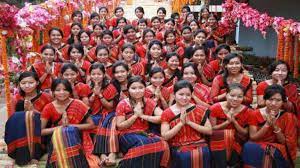Chakmas And Hajongs Communities:

The National Human Rights Commission (NHRC) in its order directed Ministry of Home Affairs and Arunachal Pradesh to submit action taken report within six weeks against alledged racial profiling and relocation of the Chakmas and Hajongs from the State.
- Also both the authorities were directed to “ensure that human rights of the Chakmas and Hajongs are protected by all the ways”.
- Members of the two communities have allegedly been victims of hate crime, police atrocities and denial of rights and beneficiary programmes.
- In 2015, the Supreme Court directed the State to grant them citizenship, but this had not yet been implemented.
- In a judgment in 1996, the Court had stated that the “life and personal liberty of every Chakma residing within the State shall be protected”.
- In light of these orders and given that most of the Chakma/Hajong community members were born in the State and have been living peacefully, the Arunachal Pradesh Chief Minister’s announcement, in August 2021, that they would be relocated outside the State and that steps would be taken for a “census” of the communities was clearly unwarranted.
- After that Chakma Development Foundation of India (CDFI) requested urgent intervention of the NHRC against racial profiling of 65,000 Chakma and Hajong tribals of Arunachal Pradesh through illegal census which was scheduled to commence from 31st December, 2021 (later plan of census was dropped) for their deportation / expulsion/ relocation from the State.
- Racial profiling is government or police activity that involves using people’s racial and cultural characteristics to identify people to investigate.
Chakmas and Hajongs:
- Mizoram and Tripura have a sizeable population of the Buddhist Chakmas while the Hindu Hajongs mostly inhabit the Garo Hills of Meghalaya and adjoining areas of Assam.
- The Chakmas and Hajongs of Arunachal Pradesh are migrants from the Chittagong Hill Tracts of erstwhile East Pakistan, now Bangladesh.
- Displaced by the Kaptai dam on the Karnaphuli River in the 1960s, they sought asylum in India and were settled in relief camps in the southern and south-eastern parts of Arunachal Pradesh from 1964 to 1969.
- A majority of them live in the Changlang district of the State (Arunachal Pradesh) today.




